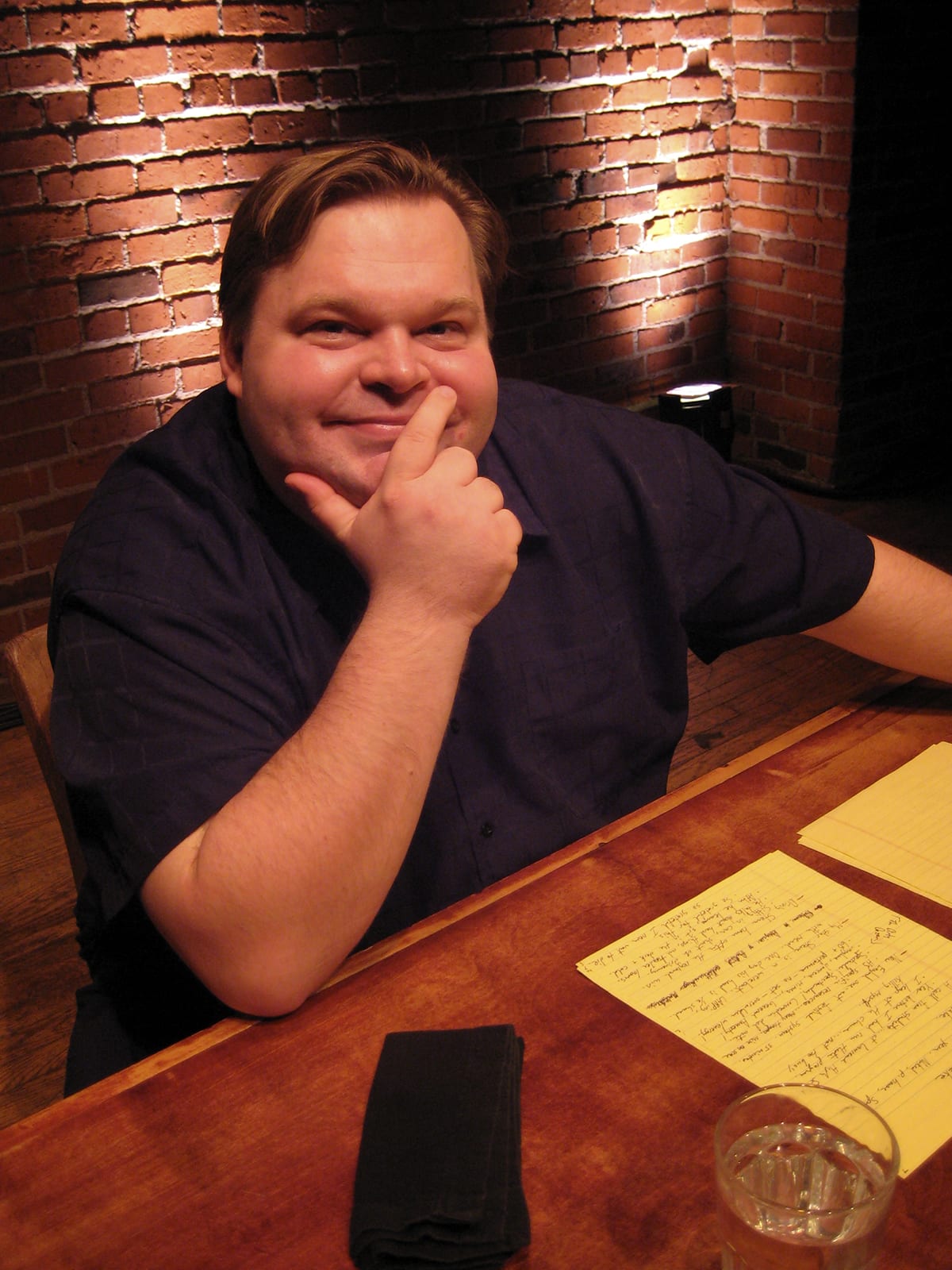Mike Daisey’s monolog The Story of the Gun is a show both hilarious and sobering, and he begins it with a wry riff on who we are who have come to see it. As he joshingly reminds us, we are liberal theatergoers, meaning that in the national conversation about guns we’re way to the left. Fair enough, he’s got us pegged. Except, he adds dead serious, there’s important stuff entirely missing from that conversation—stuff Daisey’s going to tell us. And damn, does he.
Read my interview, Mike Daisey Takes Aim at ‘The Story of the Gun’ in America
I don’t want to dissuade anyone from going—in fact, I earnestly urge the opposite—but at the end of this evening of laughing my head off, I left kind of bummed. I found my brain bursting with new information and understanding, all of which could be summed up in this: The gun problem in America is even worse than I knew.

During the show, Daisey explains how the United States was “built on the gun” and how “guns are the heart of who America is.” There’s no way not to take what Mike Daisey’s saying as damning news. But there’s no public provocateur in the nation better able to deliver damning news so enjoyably.
He promises to block out from his presentation anything we might see on CNN or anything from the flame wars between gun-rights and gun-control proponents. He wants to avoid, he says, “the buzzwordification of everything” so as to get in touch with “the fuckedupness.” Guy’s got a gritty gift of gab.
What follows is Daisey’s sweeping narrative about the invention of gun technology and its eventual use by the “pasty white people” who arrived in the New (to them) World to murder millions of people who were here already. In Daisey’s unsparing telling, the shameful saga continues with the use of guns to terrorize shipped-over black people. Addressing the audience directly as if we are the America that did this—as anyone white and woke could surmise we are—Daisey’s voice darkens. “You genocided, you enslaved at the point of a gun,” he says. And the case he makes that America could never have come into being without the gun is staggeringly irrefutable.
He goes on a fascinating tangent (actually, all his tangents are fascinating) to explain how the Bill of Rights got tacked on to the Constitution: it was because angry militia members did not trust the ruling class that wrote the darn thing and demanded the right to armed revolution if need be. The framers knew they needed to accede to this gun-wielding citizenry or else the whole document was doomed. Thus was enshrined the right to bear arms—a right exercised initially by militias in every town locked and loaded to shoot natives and black people.
As Daisey points out, the gun is of no use at all today for its original purpose: “The gun doesn’t stop the government from imposing its will anymore.” Then, he dryly observes, the people who back then agitated for gun rights to keep a check on the government would not belong today to the NRA. They’d join the ACLU.
One of the things I especially admire about Daisey’s work is that he does not evade the sexual politics of his topic. Instead, he goes there, both humbly (because he is a straight white male) and outraged (because men). He went there in The Trump Card in an excoriating takedown of the shameless pussy grabber. And he goes there in The Story of the Gun: “The gun is a very male weapon, very phallic,” he says. “It’s a man’s way of forcing his way on the world.”
There’s more, lots more. His revelations about the NRA—how it built its corporate identity through fear and racial animosity—are shocking. His respect for the students who survived the Parkland shooting and have become activists is inspiring—they were not yet trained to think change is impossible.
I know of no theater artist with Mike Daisey’s power to synthesize and distill centuries of history through a clear-eyed lens of politicized conscience and still keep his rapt audience laughing and learning and in the palm of his hand.
Running Time: One hour 55 minutes, with no intermission.
The Story of the Gun plays through August 9, 2018, at Woolly Mammoth Theatre Company – 641 D Street, NW, in Washington, DC. For tickets, call the box office at (202) 393-3939, or purchase them online.




